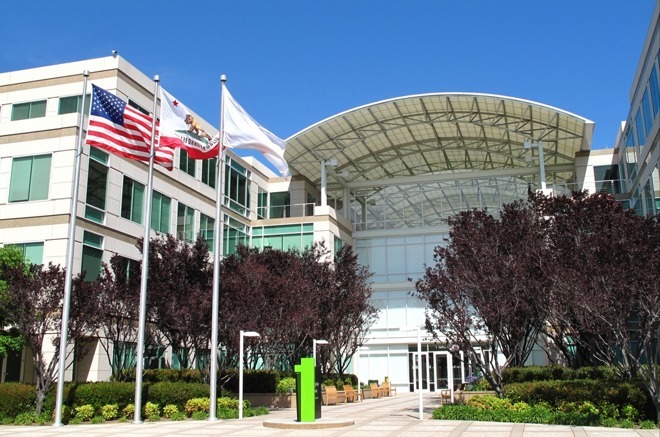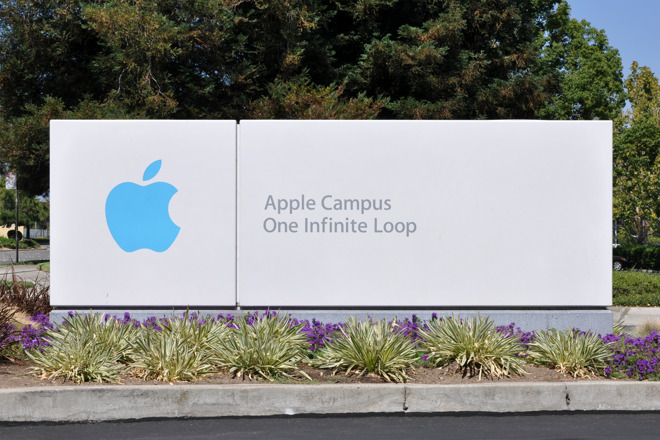In a new oral history to mark Infinite Loop's 25th anniversary, Apple leaders past and present look back on the Cupertino campus that was Apple's home for nearly a quarter century — and discussed Apple founder Steve Jobs' opinion on the company's base of operation.
An oral history has been published in Wired of the Apple Campus at Infinite Loop, which served as Apple's main headquarters in Cupertino from 1993 to 2017. The history includes contributions from Tim Cook as well as ex-CEOs John Sculley and Gil Amelio and the likes of Phil Schiller, Eddy Cue, Scott Forstall, and Greg Joswiak.
The history makes clear that while Steve Jobs first proposed a new, large Apple campus during his first stint with Apple, the design and building of the college campus-style Infinite Loop all took place during his exile from the company. And while Jobs neither built the campus or especially liked it, he ultimately made it his own, and many of the innovations with which he's associated took place there.
"When I first started working with Steve Jobs, he had this idea of building an Apple campus," former CEO John Sculley says in the oral history. "Steve called it SuperSite. He wanted something like the experience of going to Disney World, with monorails going around, where everyone was in different-colored uniforms."
Jobs left before that became a reality, but Sculley went ahead with the idea. Construction began on Infinite Loop in 1992 and the new campus opened in 1993. The campus, unlike Apple's previous headquarters, allowed "literally every person" to have their own office, Greg Joswiak told Wired.
The early years of Infinite Loop coincided with lots of turmoil at the company, as Sculley gave way to Michael Spindler who was in turn replaced by Gil Amelio. Then, before Christmas in 1996, Jobs returned to Apple after the company bought NeXT. Before long, he was the interim CEO.
"Steve didn't like the campus," Dan Whisenhunt, the company's former VP of real estate, told Wired "He wasn't here during the time it was built, and he didn't have ownership of the design." However, Jobs soon began putting his own imprint on the headquarters. He put huge "Think Different" banners in 1 Infinite Loop at the time of that campaign, including large pictures of the main products, in act that in itself improved employee morale.
Jobs' changes led to another memorable moment at the campus. When Apple discontinued the Newton in 1997, fans of that device picketed the campus. "My first day at work I had to cross a picket line to get in the building," Tim Cook told the magazine. "They are out with signs and yelling and I'm asking myself, 'What have I done?'"
But as Apple's fortunes improved throughout the early 2000s, the campus was where the iPod, iPhone and other super-successful products were developed. The campus also became a magnet for celebrities, with the likes of Muhammad Ali, Stevie Wonder and Lady Gaga stopping by Cupertino.
The campus also hosted the memorial service after Jobs died in 2011.
"We had three or four days to set up. We're good at doing stages, but the unique part was creating the landscape and the atmosphere for the event," Whisenhunt said. "We brought in sod to create more areas for people to stand and sit in. We brought in lots of beautiful trees and plants to give more serenity and greenery to the space. It was almost like a church for that morning."
And just as Jobs had made plans for a new campus that he wasn't around to see through in the early 1990s, this happened again nearly 20 years later, albeit under very different circumstances. Jobs' last public appearance, in fact, was a Cupertino City Council meeting in June 2011 in which he presented plans for the new headquarters. But of course, Jobs had already long since passed away by the time Apple Park opened in 2017. And while Apple has moved most of its main operations to the new campus, Infinite Loop remains an Apple facility, hosting office space.
How important was Infinite Loop? Eddy Cue had a surprising answer.
"At the end of the day, I don't think the campus mattered, honestly. It's the people who make the products. Would it have worked somewhere else? Yeah," answered Cue. "Now does leaving bring back really great memories? Of course."
 Stephen Silver
Stephen Silver








-m.jpg)






 Brian Patterson
Brian Patterson
 Charles Martin
Charles Martin


 Malcolm Owen
Malcolm Owen
 William Gallagher
William Gallagher
 Christine McKee
Christine McKee
 Marko Zivkovic
Marko Zivkovic









2 Comments
Before Apple took the site over (and made their various changes) it was built for, and was the headquarters for Four-Phase Systems (makers of the first all-LSI minicomputer systems) back in the late '70s. One of the things that happened during the company's move from its previous headquarters involved moving their fab; when the move was done, the fab was spun up, and it worked (not something you could count on back then).
The basic layout of the campus was much like its current format, if quite a bit simpler. Four-Phase is long gone, having been swallowed up, or parceled out to various other companies, including Motorola and Canon, but it was a pretty interesting place to work for a guy new to the Valley, and ended up being a stepping stone from there to Apple a little later for me.
Giving everybody their own office might well have seen a boost to productivity, something missing in the latest building.
Also IL was useful for small teams which are a signature of Apple. I wonder how much the new building will facilitate this.
Ken Kocienda's book shows how the original iPhone team was 25 devs, a few product managers and the design (HI) team. They were all in one tiny part of IL 2.
Can this happen in the new building? Maybe Apple was always going to get too big for this.